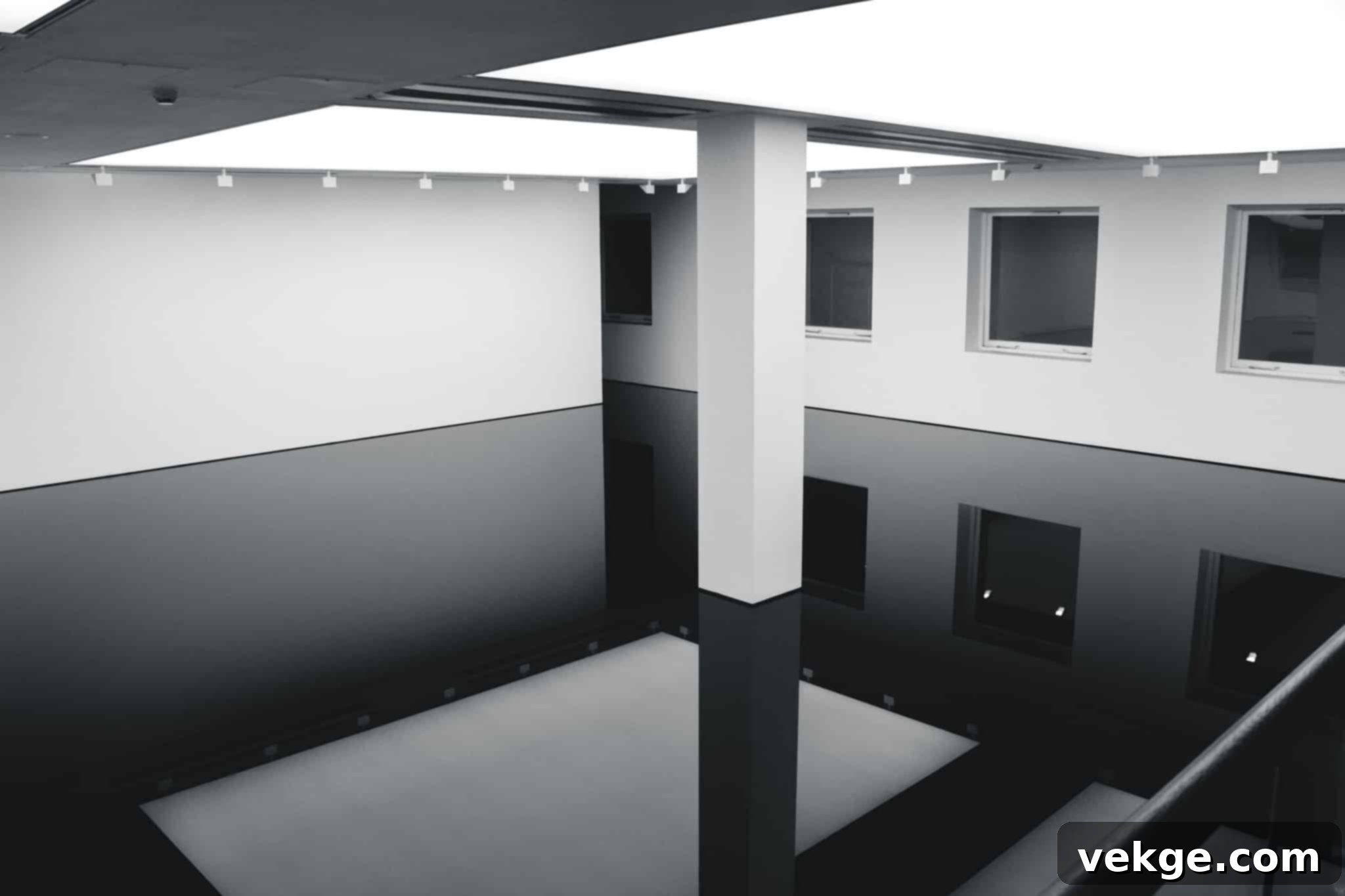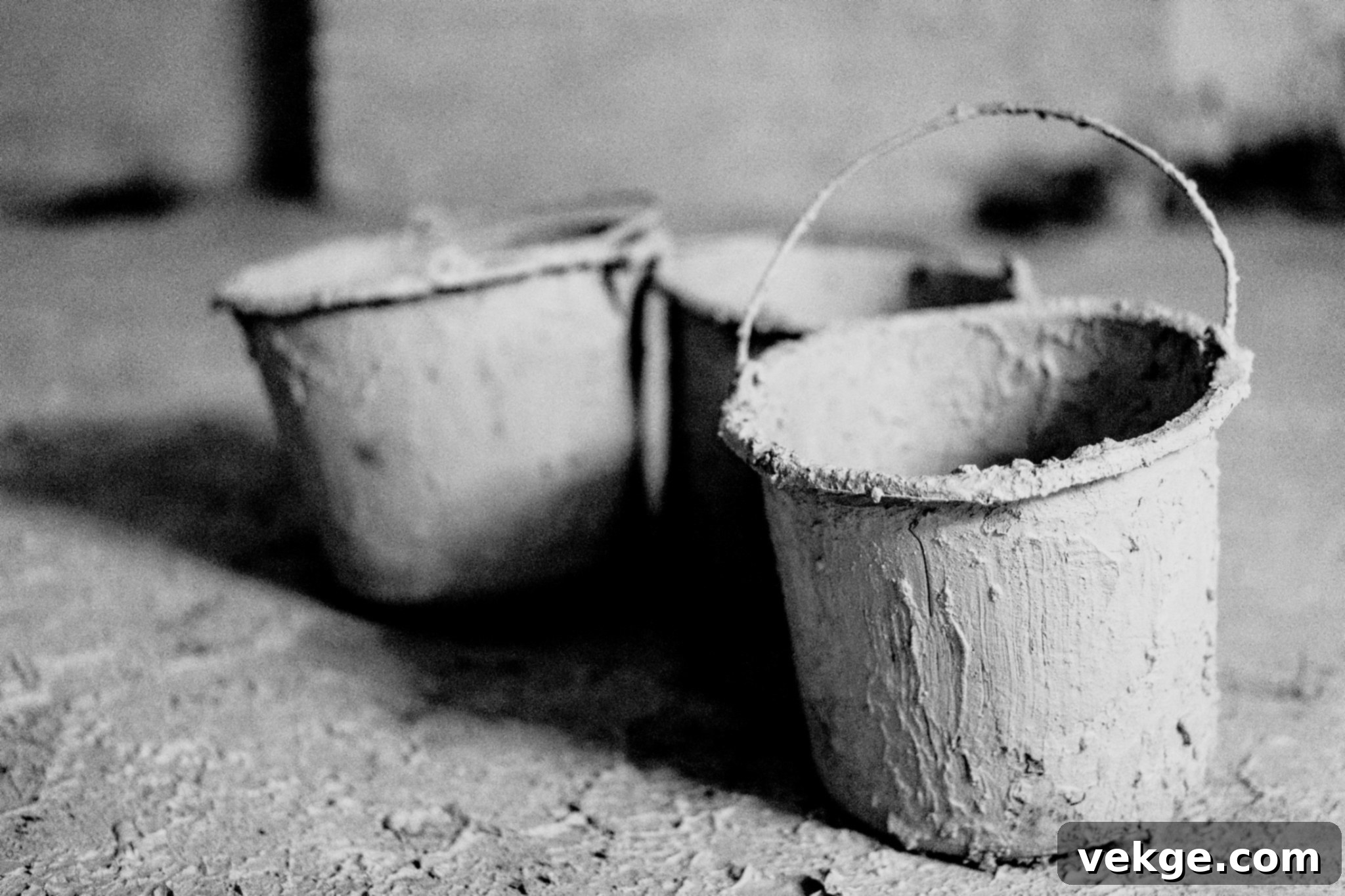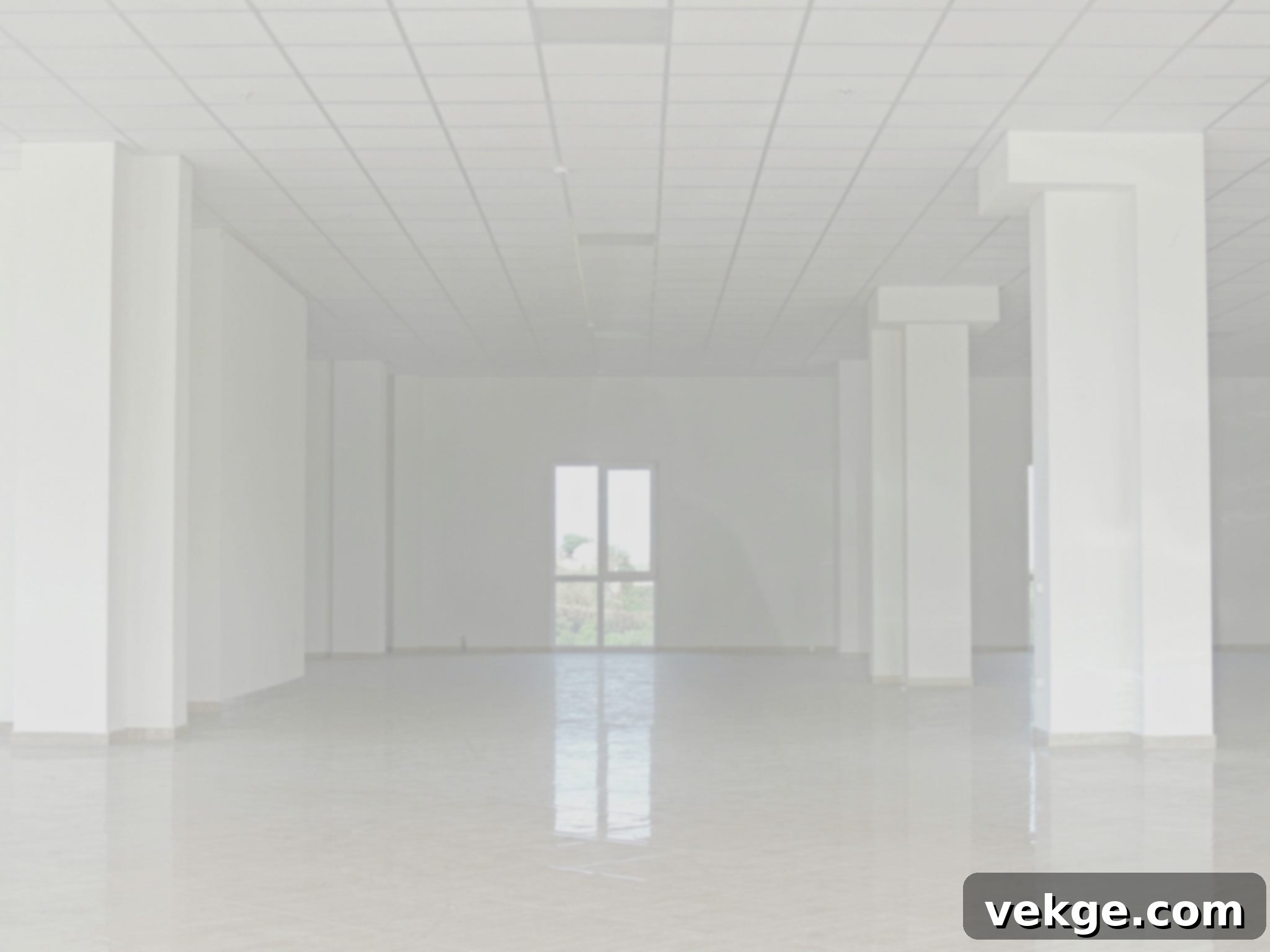The Ultimate Guide to Residential Epoxy Flooring: Durability, Style, and Benefits for Your Home
In the quest for flooring solutions that perfectly blend aesthetics with unparalleled performance, residential epoxy flooring stands out as a top contender. Far more than just a coating, epoxy floors offer a sophisticated and robust surface that transforms any living space. Known for their exceptional durability, resistance to wear and tear, and stunning visual appeal, epoxy systems are increasingly becoming the go-to choice for homeowners seeking a long-lasting and low-maintenance floor.
Choosing the right flooring for your home involves considering a myriad of factors. These include the specific function and location of the floor, the level of strength and durability required to withstand daily life, its resistance to chemicals and mechanical damage, and, crucially, the ease of cleaning and maintenance. Beyond practicalities, personal preferences regarding appearance, the need for UV protection to prevent fading in sun-exposed areas, and anti-slip qualities for safety in high-humidity zones like bathrooms or basements also play a significant role. Finally, the initial cost of installation and long-term upkeep are vital considerations. When you weigh all these elements, residential epoxy flooring often emerges as the superior choice, offering a comprehensive solution that meets diverse household needs with elegance and resilience.
What Exactly Are Epoxy Floors? Understanding the Modern Flooring Solution
At its core, an epoxy floor is a high-performance, eco-friendly surface produced from a liquid mixture of epoxy resins combined with specific catalysts. Unlike traditional paints, epoxy creates a thermosetting polymer that cures into a solid plastic material, forming a hard, durable, and glossy coating that strongly adheres to the substrate, typically concrete. All variations of epoxy floors, including essential auxiliary mixtures like primers, fillers, base coats, and protective varnishes, are fundamentally produced on a two-component basis. A hardener is an indispensable component, required to initiate the polymerization process of the resin, typically comprising approximately 25% of its volume.
The chemical reaction initiated by mixing the resin and hardener leads to the floor’s transformation. The initial curing time, allowing for light foot traffic or the application of subsequent layers, usually ranges from 7 to 10 hours. However, achieving full curing, where the floor acquires all its guaranteed properties such as maximum hardness, chemical resistance, and durability, typically takes between 7 and 14 days. During this period, it’s crucial to minimize heavy loads or exposure to harsh conditions to ensure optimal performance and longevity.
One of the most appealing aspects of residential epoxy flooring is its incredible versatility in appearance. Homeowners can customize their floors to be glossy, matte, or even textured (rough) for added grip. The aesthetic possibilities are vast, with options for a wide array of colours, decorative flakes (chips), or even metallic pigments that create unique, swirling designs. These various additives allow for a truly personalized finish that can complement any interior design scheme, from minimalist modern to luxurious traditional. Today, epoxy flooring, while being among the oldest forms of floor coating, remains one of the most durable and visually striking options available for homes.
Modern advancements in chemical engineering have significantly enhanced epoxy floors. Once considered technologically complex, they are now widely accessible and user-friendly. Contemporary additives, such as defoamers and plasticizers, have virtually eliminated issues like brittleness and abrasion, making epoxy floors more resilient and suitable for a broader range of applications. These innovations ensure that today’s epoxy floors not only look spectacular but also perform exceptionally under various conditions, making them a wise investment for any homeowner.
For those seeking professional installation and the highest quality epoxy flooring, reliable services can be found on the web. A prime example is Ultra Coating Epoxy Flooring, known for their expertise in transforming residential spaces with superior epoxy solutions.
Why Choose Epoxy Flooring for Your Home? Unveiling the Key Benefits
The decision to install epoxy flooring in your home is backed by a compelling list of advantages that address both practical needs and aesthetic desires. Here are the primary reasons why epoxy is an increasingly popular choice for modern homeowners:
-
Unmatched Durability and Resistance to Stress
Epoxy floors are engineered to withstand significant stress. They are exceptionally resistant to scratches, chips, and impacts, making them ideal for high-traffic areas, garages, and basements where heavy items might be dropped. This robust nature means your floor will maintain its pristine appearance even under intensive use, providing a peace of mind that other flooring types simply cannot offer.
-
Exceptional Longevity and Service Life
When properly installed and maintained, an epoxy floor can boast an impressive service life of 10-15 years, often even longer. This remarkable durability translates into a smart, long-term investment, significantly reducing the need for frequent repairs or replacements compared to traditional flooring materials. Its ability to resist daily wear and tear ensures its beauty and functionality endure for decades.
-
Superior Moisture Resistance
One of the standout features of epoxy is its seamless, non-porous surface, which makes it highly resistant to moisture. This characteristic is invaluable in preventing water damage, mold, and fungus formation, especially in moisture-prone areas like basements, laundry rooms, and garages. This resistance is crucial for maintaining a healthy and dry environment within your home.
-
Compatibility with Underfloor Heating and Fire Safety
With the surging demand for individual residential construction, requirements for floor thermal loads have intensified. Epoxy floor coverings are designed to be compatible with underfloor heating systems, effectively withstanding overheating without degradation. Furthermore, certain epoxy formulations offer enhanced fire safety properties, meaning they do not spread flames, adding an extra layer of protection to your home. This makes epoxy a versatile and safe option for modern home designs.
-
High Wear Resistance and Practicality
Epoxy floors excel in wear resistance, demonstrating superior resilience against friction, dragging, scratching, and other everyday influences. Their hard-wearing nature makes them incredibly practical for busy households, ensuring they remain attractive and functional despite constant activity. This parameter of wear resistance is a key factor in the material’s overall durability and longevity.
-
Eco-Friendly and Sustainable Choice
While polymer floors are not made from natural materials, they are remarkably close in terms of hygiene characteristics and environmental impact once cured. Epoxy and polyurethane compositions typically emit volatile organic compounds (VOCs) only during the polymerization process or if solvents are added during application. Once fully cured, the coating is completely inert and harmless, contributing to healthier indoor air quality. Many brands also offer products that guarantee safety even during the installation process, reflected in quality certifications. Prioritizing sustainability and ecology, sustainable epoxy flooring is indeed a great choice for environmentally conscious homeowners.
-
Enhanced Safety Features
Safety is paramount in any home, and epoxy coatings can be specially formulated with anti-slip components. These additives significantly reduce the risk of falls and injuries, particularly in areas frequently exposed to moisture or liquids, such as kitchens, bathrooms, and utility rooms. Moreover, the smooth, non-porous surface of epoxy floors prevents the accumulation of dirt, dust, and germs, making them exceptionally hygienic and easy to sanitize – a critical factor for maintaining a clean home environment. Certain epoxy coatings also boast high fire resistance, helping to slow the spread of fire and providing crucial time in the event of an emergency. Thus, opting for epoxy flooring for homes is undeniably a safe decision for your family.
-
Effortless Cleaning and Maintenance
The seamless and non-porous nature of epoxy surfaces means they are incredibly easy to clean. Dirt, spills, and grime cannot penetrate the surface, allowing for quick and simple cleanup with just a mop and mild cleaning solutions. This reduces the need for aggressive chemicals, which not only lessens the environmental impact but also protects human health. Low maintenance translates to more free time for homeowners.
-
Quick Application and Efficient Drying Time
Compared to many other types of floor coatings, epoxy flooring systems can be applied and dried relatively quickly. While full curing takes time, the initial application process is efficient, and surfaces are often walkable within hours. This efficiency minimizes disruption and expedites the commissioning of a room, allowing homeowners to enjoy their new floors sooner.
-
Boosts Home Value and Aesthetic Appeal
The sleek, modern, and highly customizable finish of epoxy flooring significantly enhances the aesthetic appeal of any home. Its ability to mimic stone, marble, or create unique artistic designs, coupled with its proven durability, makes it a valuable asset. Installing epoxy floors can increase your home’s market value and attract potential buyers, offering a high return on investment.

How to Choose the Right Epoxy Floor Material: A Comprehensive Guide
Epoxy flooring is an excellent choice for those seeking a high-quality, durable, and aesthetically pleasing flooring solution. However, not all epoxy systems are created equal. There are different types of epoxy floors, each with specific characteristics that make them suitable for various applications and environments. Understanding the composition and the materials involved is key to making an informed decision for your home. By selecting the right combination of materials, you can ensure your epoxy floor performs optimally and looks fantastic for years to come.

What Key Materials Are Used for Epoxy Flooring?
The construction of a durable and beautiful epoxy floor involves several specialized materials, each playing a critical role in the final product:
-
Epoxy Resin (Part A)
Epoxy resin is the foundational material for creating these robust coatings. It is a thermosetting polymer that, when chemically reacted with a hardener, cures to form an extremely tough, wear-resistant, and chemically resistant surface. Epoxy resin is celebrated for its exceptional adhesive properties, allowing it to bond strongly with a variety of substrates, particularly concrete, making it an ideal choice for durable flooring systems. The quality and type of resin significantly influence the final floor’s characteristics.
-
Hardener / Catalyst (Part B)
The hardener, often referred to as a catalyst, is absolutely essential for initiating the polymerization process of the epoxy resin. When the epoxy resin is precisely mixed with the hardener in specific ratios, a chemical reaction occurs, causing the liquid resin to cure and solidify into a rigid polymer. Hardeners come in various types, including amine-based and polyamide-based, with the selection largely depending on the desired properties of the final coating, such as cure time, flexibility, and chemical resistance.
-
Fillers and Additives: Customizing Performance and Aesthetics
Depending on the required characteristics and desired appearance of the final coating, various aggregates and specialized additives can be incorporated into the epoxy system:
- Quartz Sand: This common filler is used to create textured or anti-slip surfaces, crucial for safety in wet areas. It also adds significant strength and impact resistance to the epoxy, enhancing its durability.
- Pigments and Dyes: These are added to create an endless array of colours and shades, allowing for complete customization to match any interior design theme. From solid colours to vibrant hues, pigments are key to the aesthetic appeal.
- Flakes (Chips): Decorative vinyl or polymer flakes are broadcast into the wet epoxy layer to enhance the floor’s appearance with a speckled or granite-like finish. They also add a subtle texture, which can slightly improve slip resistance.
- Metallic Pigments: Used to create stunning, unique, and often three-dimensional effects, metallic pigments are popular for creating high-end, artistic, and marble-like finishes.
- Adhesion Enhancers: Special additives designed to improve the bond between the epoxy coating and the substrate, ensuring long-term adhesion and preventing delamination.
- Plasticizers: Added to improve the flexibility of the cured coating, reducing brittleness and making the floor more resistant to cracking from minor substrate movement or impacts.
-
Primer: The Foundation of Adhesion
Before the main epoxy coating is applied, a primer is typically used. This preparatory layer serves several crucial functions: it significantly improves the adhesion of the epoxy coating to the substrate, penetrates and seals the concrete pores, and helps to address minor surface imperfections. A properly applied primer ensures a strong bond, prevents bubbling, and creates a uniform base for the subsequent epoxy layers.
-
Finish / Top Coat: The Protective Layer
A final finish coat, or topcoat, is often applied over the main epoxy layers for additional protection and to enhance the floor’s appearance. Topcoats can be chosen with different sheens – glossy for a high-shine look, matte for a subtle, contemporary finish, or semi-matt. Furthermore, specialized topcoats can be formulated with properties such as enhanced UV resistance (to prevent yellowing from sunlight), antibacterial agents for hygienic environments, or antistatic properties for sensitive areas. This final layer significantly contributes to the floor’s longevity and aesthetic appeal.
These sophisticated floor coating materials and application techniques allow for the creation of incredibly diverse, exceptionally durable, and aesthetically pleasing surfaces suitable for a wide range of residential spaces. By understanding these components, homeowners can better appreciate the quality and customization possible with epoxy flooring.
To ensure the best results, it’s always recommended to consult with experts or follow detailed guides on installation. You can learn more about how to install epoxy coating on your floors through comprehensive resources, though professional installation is often advised for optimal outcome. Ultimately, choosing the right floor coating materials based on your preferences, budget, and the specific demands of your home environment will lead to a successful and satisfying result.
Make the right choice of floor coating for homes and invest in the lasting beauty and performance of epoxy!
